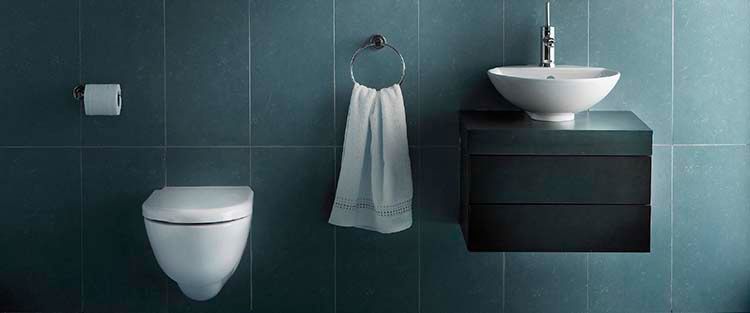Pros and cons of in-wall toilet cisterns
This sleek, modern toilet design is the biggest change in toilets since the dual flush. In-wall toilet cisterns (sometimes referred to as a concealed cistern or hideaway cistern) can provide a compact solution for small bathrooms or ensuites as well as a contemporary look for larger bathrooms. This stylish toilet design solves space problems in many bathrooms but is not without its disadvantages. Our plumber reveals the pros and cons of in-wall toilet cistern. Keep reading to learn more!

How a toilet works
Toilets are essentially two parts, that is the bowl (the base we sit on), and the cistern or tank (where the plumbing parts are housed). It works by water flowing into the cistern up to a certain level. That water is stored until it’s needed to flush. When the button is pushed, a valve in the base of the cistern opens, the water rushes down the bowl, the valve closes, and the cistern refills itself.
For a more streamlined bathroom design, plumbers and interior designers worked out that the only part we really need to see is the bowl, with the cistern and pipes neatly tucked away in a wall cavity, ceiling, or sink vanity unit.
LOOKING FOR TOILET PLUMBERS?
Get professional help, book a great Sydney plumber here
Advantages of the concealed toilet cistern
Advantages of the concealed toilet cistern include the sleek look and reduced cleaning requirements.
- Modern, clean-lined bathroom designs are very popular with home buyers at the moment, a concealed cistern could help if you are wanting to sell soon.
- The concealed cistern also frees up space making it ideal for small bathrooms, en-suites, or for the elderly or those with limited mobility.
- This compact toilet style means there is less to clean and all the ugly pipework is neatly tucked away in the wall.
- Without the cistern incorporated, the bowl can be wall hung so that it’s not in contact with the flooring, or standing separately from the wall.
- The flush button of the toilet doesn’t necessarily have to be exactly where the cistern or toilet is, which again can be useful for those of limited mobility.
Disadvantages of the concealed cistern
Some of the disadvantages of the concealed cistern include repair issues as when a toilet problem occurs it’s usually in the cistern. Common toilet repair issues include a cracked ballcock or a twisted pulley, these are problems can usually be replaced or untwisted easily. Toilet problems like this are not so simple to carry out when you need to access an in-wall cistern, possibly increasing repair costs.
This style of toilet is also more expensive to buy than the regular style. The installation of a hideaway cistern is also more complicated as it needs to sit in the wall void or cavity which can add to the installation costs.
Fun Toilet Fact
It’s a common misconception that the flushing toilet was first patented by Thomas Crapper (although, what a good name). He did patent a more efficient system, but the first patent issued for the flush was to an Alexander Cummings back in 1775.
From its basic beginnings, the flush system hasn’t altered much over the years, but the toilet itself has developed into a better looking and more comfortable commodity. If you are thinking of renovating your old bathroom or constructing a new one, you now have more options to consider that will improve the aesthetic, functionality, and space of your bathroom. The concealed cistern is gaining popularity in bathroom design for those reasons.
Speak to the plumbing experts
When considering your new bathroom and a concealed cistern, speak to your local plumber to find out where they recommend the cistern to be placed or if your home is suitable for this style of toilet.
It is a more complicated job than installing a regular toilet system, so use a licenced plumber who is experienced in this particular work. Ask for recent samples and references from customers, and check that their license is up to date.
